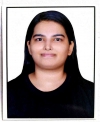I. Understanding the biology of Mycobacterial Persistence
Globally, a third of human population is infected with Mycobacterium tuberculosis(Mtb), the causative agent of tuberculosis. Mtb, being an obligate intracellular pathogen, has lived to co-evolve with human for centuries. Unlike actively infected individuals, latently infected population harbors pathogen for decades without showing any overt symptoms. This interesting phenotype is attributed to a slow growing, metabolically altered sub set of heterogeneous Mtb population called ‘persisters’. These persisters are refractory to anti-mycobacterial insult and can only be targeted by a strict regimen comprising of a combination of drugs for an unusually extended period. The protracted regimen triggers non-compliance and contributes towards increase in the frequency of cases involving MDR and XDR tuberculosis.
A. Bacterial metabolism, physiology and persistence
The ability of the pathogen to “adapt” to host environment is key to its persistence. Understanding bacterial metabolism and physiology is important to decipher the mechanism and pathways critical for persistence of mycobacteria inside host. Since Mtb is an obligate intracellular pathogen, it depends on host for its nutritional requirements. Inside the host, Mtb subsists mainly on host derived fatty acid and cholesterol as a preferred carbon source. Although Mtb ingests cholesterol throughout the infection process, cholesterol becomes essential only during the later stage of chronic infection. Genetic and molecular understanding of cholesterol utilization, its mechanism and relevance would contribute significantly in designing novel intervention strategies in the treatment of tuberculosis. The knowledge acquired on the genes involved in uptake and metabolism of cholesterol in Mtb is very likely to generate new and more efficient drug targets. The role of cholesterol metabolism in mycobacterial persistence would also be better understood. The ultimate goal will be to generate an interactome map of the regulatory pathways of cholesterol utilization in Mtb.
B. Cholesterol catabolic pathways as therapeutics target
Current tuberculosis treatment regimen involves multiple drugs for a prolong period. The duration could be from three months to two years depending on the type of infection. Prolong treatment leads to non-compliance and emergence of newer drug resistance strains. Shortening the therapy would go a long way in alleviating this problem. It is widely perceived that the major culprits are the so-called non-replicating and metabolically inactive “persister” population. The importance of cholesterol metabolism during the persistence stage of Mtb infection and its potential role in generation of persisters is very intriguing. In light of the above facts and hypothesis the focus of the current proposal is to screen for chemical inhibitors that specifically target these pathways. The long-range goal would be identify novel anti-tubercular drugs that specifically targets “persisters”. These novel compounds in combination with the standard frontline anti-tubercular drugs would significantly enhance the success rate in tuberculosis therapy.
C. Iron regulation in Mtb and its implications on mycobacterial persistence
Although, iron is essential for most of the bacteria, excess of intracellular free iron is toxic. Failure to do so might lead to death either due to iron deficiency or toxicity. Hence, the acquisition and storage of iron in bacteria is tightly regulated. Since iron deprivation is also one of the anti-microbial strategies that the host adopts, both pathogen and the host compete for the limited iron during infection. We for the first time have demonstrated that the Mtb transcription repressor protein sufRTBregulates the ISC operon and has a role in controlling the intracellular iron homeostasis in Mtb. Disruption of the iron homeostasis in ΔsufRTBdecreased the fitness of the mutant strain to grow inside mouse bone marrow-derived macrophages. The transcription repressor protein sufRTBwas also required for growth of Mtb under oxidative and nitrosative stress conditions. The enhanced biofilm production phenotype observed in ΔsufRTBis intriguing and suggests a role of intracellular iron homeostasis in the generation of biofilms in mycobacteria. Finally, we demonstrated that the sufRTBprotein mediated regulation of Fe homeostasis in Mtb is required for Mtb to persist inside the host.
D. Screening and Identifying new molecular scaffolds targeting persisters
We in our lab have successfully identified proteins critical for the generation and maintenance of mycobacterial persisters. The aim of the proposal is to shorten the treatment regimen by identifying novel compounds that specifically target these proteins thereby significantly decreasing the frequency of generation of persisters during Mtb infection.
II. Live recombinant M bovisBCG (rBCG) strain as a better vaccine candidate against tuberculosis
Although, Mycobacterium bovis derived BCG is widely been used as vaccine to prevent tuberculosis, its effectiveness towards controlling tuberculosis is questionable. BCG is shown to be good at controlling severe forms of tuberculosis in infants, but fails to do so in case of pulmonary tuberculosis in adults. The challenge is to design a vaccine strain that is a) safe, b) immunogenic, c) longlasting and d) protects against tuberculosis caused by all strains.We in our lab are working on strategies to generate rBCG strains that we believe will be more immunogenic and hence would generate better and long lasting protective immune response against Mtb.
III. Host-Directed Therapies against tuberculosis
We are also interested in identifying and targeting critical host proteins that facilitates mycobacterial survival inside host. We are currently developing protocols for CRISPR-cas9 based strategies to delete specific genes for development of knockout cell lines. The plan is to design an unbiased approach towards screening and identifying host genes that modulate growth of Mtb inside cells. The long-term goal is to identify inhibitors against these genes to be used as drug against tuberculosis.
1. Hypothetical gene Rv0495c regulates redox homeostasis in Mycobacterium tuberculosis. Rahul Pal, Sakshi Talwar, Manitosh Pandey, Vaibhav Nain, Taruna Sharma, Shaifali Tyagi, Vishawjeet Barik, Shweta Chaudhary, Sonu Kumar Gupta, Yashwant Kumar, Ranjan Nanda, Amit Singhal and Amit Kumar Pandey*. (2024). Tuberculosis (2024);45:102477.https://doi.org/10.1016/j.tube.2024.102477
2. Biocompatible Human Placental Extracellular Matrix Derived Hydrogels. Sunil Gujjar, Anurag Tyagi, Saloni Sainger, Puja Bharti, Vaibhav Nain, Pratibha Sood, Prakash Jayabal, Jagadish Chandra Sharma, Priyanka Sharma, Sanjay Rajput, Anil Kumar Pandey, Amit Kumar Pandey, Prasad Abnave, Santosh Mathapati. Advanced Biology: 8;(1);Oct 2024. https://doi.org/10.1002/adbi.202300349
3. VapC12 ribonuclease toxin modulates host immune response during Mycobacterium tuberculosis infection. Shaifali Tyagi, Srikanth Sadhu, Taruna Sharma, Abhijit Paul, Manitosh Pandey, Vaibhav Nain, Deepak Rathore, Samrat Chatterjee, Amit Awasthi*, Amit Kumar Pandey*. (2023). Frontiers in Immunology. 2024. In press
4. Chemical inhibition of histidine biosynthesis curtails M. tuberculosis infection. Satish Tiwari, Mohammed Ahmad, Varun Kumar, Deepsikha Kar, Swati Kumari, Abhisek Dwivedy, Ravi Kant Pal, Amit Mohapatra, Vaibhav Kumar Nain, Vishawjeet Barik, Rahul Pal, Ranjan Nanda, Amit Kumar Pandey# & Bichitra Kumar Biswal#. (2023). BioRxiv 2023.06.20.545697; doi: https://doi.org/10.1101/2023.06.20.545697
5. Transcription factor mce3R modulates antibiotics and disease persistence in Mycobacterium tuberculosis. Manitosh Pandey, Sakshi Talwar, Rahul Pal, Vaibhav Nain, Sonia Johri, Amit Singhal, Amit Kumar Pandey*. (2023) Research in Microbiology. https://doi.org/10.1016/j.resmic.2023.104082
6. Omicron sub-lineage BA. 5 infection results in attenuated pathology in hACE2 transgenic mice Zaigham Abbas Rizvi, Jyotsna Dandotiya, Srikanth Sadhu, Ritika Khatri, Janmejay Singh, Virendra Singh, Neeta Adhikari, Kritika Sharma, Vinayake Das, Amit Kumar Pandey, Bhabatosh Das, Guruprasad Medigeshi, Shalendra Mani, Shinjini Bhatnagar, Sweety Samal, Anil Kumar Pandey, Pramod Kumar Garg, Amit Awasthi. Commun Biol 6, 935 (2023). https://doi.org/10.1038/s42003-023-05263-6
7. Investigating a putative transcriptional regulatory protein encoded by Rv1719 gene of Mycobacterium tuberculosis. Manitosh Pandey, Satish Tiwari, Sonia Johri, Bichitra K Biswal, Chandresh Sharma*, Amit Kumar Pandey*. The Protein Journal (2022);41(3):424-433
8. Low levels of Fe and Se with high IL-6/IL-10 likely influence nutritional immunity in tuberculosis patients. Sandeep R Kaushik, Sukanya Sahu, Hritusree Guha, Sourav Saha, Ranjit Das, Rukuwe-u Kupa, Wetetsho Kapfo, Trinayan Deka, Rumi Basumatary, Asunu Thong, Arunabha Dasgupta, Bidhan Goswami, Amit Kumar Pandey, Lahari Saikia, Vintosole Khamo, Anjan Das, Ranjan Nanda*. Front Immunol. (2022);13:985538. doi: 10.3389/fimmu.2022.985538
9. Novel genetic polymorphisms identified in the clinical isolate of Mycobacterium tuberculosis PE_PGRS33 gene modulates cytokines secretion and promotes in-vitro survival inside macrophages. Rahul Gupta, Manitosh Pandey, Amit Kumar Pandey, Pramod Kumar Tiwari* and Rabbind Singh Amrathlal*. Journal of Infection and Public Health (2021). doi: https://doi.org/10.1016/j.jiph.2022.01.001
10. Golden Syrian hamster as a model to study cardiovascular complications associated with SARS-CoV-2 infection. Zaigham Abbas Rizvi, Rajdeep Dalal, Srikant Sadhu, Akshay Binayke, Jyotsna Dandotiya, Yashwant Kumar, Tripti Srivastava, Sonu Kumar Gupta, Suruchi Agarwal, Manas Ranjan Tripathy, Deepak Kumar Rathore, Amit Kumar Yadav, Guruprasad R. Medigeshi, Amit Kumar Pandey, Sweety Samal, Shailendra Asthana, Amit Awasthi*. eLife (2022);11;e73522, doi: 7554/eLife.73522.
11. Gefitinib results in robust host-directed immunity against Salmonella infection through proteo-metabolomic reprogramming. Srikanth Sadhu, Zaigham Abbas Rizvi, Ramendra Pati Pandey, Rajdeep Dalal, Deepak Kumar Rathore, Bhoj Kumar, Manitosh Pandey, Yashwant Kumar, Renu Goel, Tushar Kanti Maiti, Atul Kumar Johri, Ashutosh Tiwari, Amit Kumar Pandey, Amit Awasthi*. Frontiers in Immunology (2021). 31 March 2021 https://doi.org/10.3389/fimmu.2021.648710.
12. Reverse Zoonosis of coronavirus disease-19: Present status and the control by one health approach. R. Kumar Pramod, Asha V. Nair, Padmakar Kamalakar Tambare, Kanchana Chauhan, T. Vinay Kumar, R. Anju Rajan, Blessy M. Mani, Muhasin Asaf and Amit Kumar Pandey. Veterinary World (2021), 14(10): 2817-2826. https://doi.org/10.14202/vetworld.2021.2817-2826
13. Host cholesterol modulates the generation and enrichment of persister population during Mycobacterium tuberculosis infection. Sakshi Talwar, Manitosh Pandey, Chandresh Sharma, Rintu Kutam, Josephine Lum, Daniel Carbajo, Renu Goel, Michael Poidinger, Debasis Dash, Amit Singhal and Amit Kumar Pandey*. mSystems (2020), Dec 2020, vol 5(6). https://doi.org/10.1128/mSystems.00855-20.
14. Essential role of NIX in metabolic reprogramming for macrophage plasticity during mycobacterial species infection. Ranjeet Singh Mahla, Akhilesh Kumar, Helena Tutil, Sreevidhya Tarakkad Krishnaji, Bharathwaj Sathyamoorthy, Mahad Noursadeghi, Judith Breuer, Amit Kumar Pandey and Himanshu Kumar*. Tuberculosis (2021), Vol 126, https://doi.org/10.1016/j.tube.2020.102046
15. Exploration of potential extra-ribosomal functions of Mtb RpsB in imparting stress resilience and drug tolerance in Mycobacteria. Chetan Prakash, Manitosh Pandey, Yatendra Singh, Saneev Kanojiya, Amit Kumar Pandey and Niti Kumar*. Biochimie (2020). Vol 177, Oct, Pages 87-97. https://doi.org/10.1016/j.biochi.2020.08.007
16. Evaluation of in silico designed inhibitors targeting MelF (Rv1936) against Mycobacterium marinum within macrophages. Renu Dharra, Radhakrishnan VS, Tulika Prasad, Zoozeal Thakur, Jeffrey Cirillo, Amit Kumar Pandey, Mahesh Kulharia and Promod Mehta. Scientific Reports (2019) volume 9, Article number: 10084. https://www.nature.com/articles/s41598-019-46295-5
17. Iron homeostasis in Mycobacterium tuberculosis is essential for persistence. Manitosh Pandey, Sakshi Talwar, Sutapa Bose and Amit Kumar Pandey*. Scientific Reports (2018) volume 8, Article number: 17359. https://www.nature.com/articles/s41598-018-35012-3
18. Diphenyleneiodonium chloride (DPIC) displays broad-spectrum bactericidal activity. Manitosh Pandey, Alok Kumar Singh, Ritesh Thakare, Sakshi Talwar, Pratiksha Karaulia, Arunava Dasgupta, Sidharth Chopra, and Amit Kumar Pandey*. Scientific Reports (2017). volume 7, Article number: 11521. https://doi.org/10.1038/s41598-017-11575-5.
19. Biological evaluation of Diphenyleneiodonium chloride (DPIC) as a potential drug candidate for treatment of non-tuberculous mycobacterial infections. Alok Kumar Singh, Pratiksha Karaulia, Ritesh Thakare, Swetarka Das, Manitosh Pandey, Amit Kumar Pandey, Sidharth Chopra and Arunava Dasgutpa*. Journal of Antimicrobial Chemotherapy (2017). Volume 72, Issue 11, 1 Nov, Pages 3117–3121, https://doi.org/10.1093/jac/dkx277.
20. Rational design of drug-like compounds targeting Mycobacterium marinum MelF Protein. Rennu Dharra, Sakshi Talwar, Jeffery D. Cirillo, Amit Kumar Pandey, Mahesh Kulharia, and Parmod K. Mehta*. PloS One (2017). https://doi.org/10.1371/journal.pone.0183060.
21. Systematic Analysis of Mycobacterial Acylation Reveals First Example of Acylation-mediated Regulation of Enzyme Activity of a Bacterial Phosphatase. Anshika Singhal, Gunjan Arora, Richa Virmani, Parijat Kundu, Tanya Khanna, Andaleeb Sajid, Richa Misra, Jayadev Joshi, Vikas Yadav, Sintu Samanta, Neeru Saini, Amit K. Pandey*, Sandhya S. Visweswariah, Christian Hentschker, Dorte Becher, Ulf Gerth* and Yogendra Singh*. J Biol Chem. (2015) Oct 23;290(43):26218-34. doi: 10.1074/jbc. M115.687269. Epub 2015 Sep 8.
*co-corresponding authors
22. Identification of Ser/Thr kinase and forkhead associated domains in Mycobacterium ulcerans: characterization of novel association between protein kinase Q and MupFHA. Gunjan Arora, Andaleeb Sajid, Anshika Singhal, Jayadev Joshi, Richa Virmani, Meetu Gupta, Nupur Verma, Abhijit Maji, Richa Misra, Gregory Baronian, Amit K. Pandey, Virginie Molle, Yogendra Singh. PLoS Negl Trop Dis. (2014) Nov 20;8(11):e3315. doi: 10.1371/journal.pntd.0003315. eCollection 2014 Nov.
23. Cholesterol catabolism by Mycobacterium tuberculosis requires transcriptional and metabolic adaptations. Jennifer E.Griffin*, Amit K. Pandey*, Sarah A. Gilmore, Valerie Mizrahi, John D. McKinney, Carolyn R. Bertozzi and Christopher M. Sassetti.Chemistry and Biology (2012) Feb: 24,19(2):218-27. *contributed equally to this work
24. NOD2, RIP2 and IRF5 Play a Critical Role in the Type I Interferon Response to Mycobacterium Tuberculosis. Amit K. Pandey, Yibin Yang, Zhaozhao Jiang, Sarah M. Fortune, Francois Coulombe, Marcel A. Behr, Katherine A. Fitzgerald, Christopher M. Sassetti and Michelle A. Kelliher. PLoS Pathogen (2009), Jul;5(7):e1000500. Epub 2009 July3.
25. Increase NOD2-mediated recognition of N-glycolylated muramyl dipeptide. Francois Coulombe, Maziar Divangahi, Frederic Veyrier, James Gleason, Yibin Yang, Michelle A.Kelliher, Amit K. Pandey, Christopher M. Sassetti, Michael B. Reed and Marcel A. Behr. Journal of Expt. Med. (2009). Aug 3;206(8):1709-16. Epub 2009 Jul 6.
26. Phthiocerol dimycocerosate (PDIM) transport is required for resisting IFN-γ-independent immunity. Jeffrey P. Murry, Amit K. Pandey, Christopher M. Sassetti, and Eric J. Rubin. 2009. Journal of Infectious Diseases. (2009). Sep 1;200(5):774-82.
27. Role of Cholesterol in Mycobacterium tuberculosis infection. Maurine D Miner, Jennifer C Chang, Amit K Pandey, Christopher M Sassetti and David R Sherman. Indian Journal of Exp. Biol. (2009). June; 47: 407-11.
28. igr genes and Mycobacterium tuberculosis cholesterol metabolism. Jennifer C Chang, Maurine D Miner, Amit K Pandey, Wendy P Gill, Nada S Harik, Christopher M Sassetti and David R Sherman. J. Bacteriol. (2009). Aug;191(16):5232-9.
29. Nitrile-inducible gene expression in mycobacteria. Amit K. Pandey, Sahadevan Raman, Rose Proff, Swati Joshi, Choong-Min Kang, Eric J. Rubin, Robert N. Husson and Christopher M. Sassetti. Tuberculosis (Edinb) (2009).Jan;89(1):12-16
30. Mycobacterial persistence requires the utilization of host cholesterol. Amit K. Pandey and Christopher M Sassetti. Proc Natl Acad Sci. U S A (2008). March 18; 105(11):4376-80. http://www.pnas.org/content/105/11/4376.full.pdf+html
31. NOD2 pathway activation by MDP or Mycobacterium tuberculosis infection involves the stable polyubiquitination of Rip2. Yibin Yang, Catherine Yin, Amit Pandey, Derek Abbott, Christopher Sassetti and Michelle A. Kelliher. J. Biol. Chem.(2007) Dec 14; 282(50):36223-9.
32. Characterization of mycobacterial virulence genes through genetic interaction mapping. Swati Joshi, Amit K. Pandey, Nicole Capite, Sarah M. Fortune, Eric J. Rubin, and Christopher M. Sassetti. Proc Natl Acad Sci. U S A.(2006). Aug 1; 103(31):11760-5.
33. Identification of Mycobacterium marinum macrophage infection mutants. Parmod K. Mehta*, Amit K. Pandey*, Selvakumar Subbian, Mustapha M. Samarkandi, Suat L.G. Cirillo and Jeffery D. Cirillo. Microb Pathog.(2006). Apr;40(4):139-51. *contributed equally to this work.
Projects in the laboratory:
1. We have identified novel pathways that regulate cholesterol mediated mycobacterial persistence and we are looking for highly motivated graduate students who are interested in understanding the biology of mycobacterial persistence. More specifically, the research focus will be to characterize and understand the roles of few identified Mtb genes in mycobacterial persistence.
2. My lab will be interested in generating a carbon source independent in-vitro model of mycobacterial persistence. Briefly, since we have some preliminary understanding of how persisters are generated, we would like to utilize our understanding to rewire Mtb signaling by generating recombinant Mtb that mimic “persisters”. The strain thus generated would be characterized by identifying persister specific transcriptional and proteomic signatures. This model would than be used for screening antimicrobial compounds specifically targeting persisters.
3. Since Mtb is an obligate intracellular pathogen, it has to adapt very quickly to intracellular niche and neutralize any host-mediated insults. We would also be interested in exploring the contribution of host in helping long-term survival of the pathogen inside the host. Briefly, the potential host targets genes will be knocked out by CRISPR and the role of specific host genes would be deciphered by analysing the growth of mycobacteria in these KO cell lines.
-
Ramalingaswami Fellowship, 2010-11
-
ICAR-SRF Fellowship
-
ICAR JRF Fellowship

MR. VAIBHAV KUMAR NAIN
PROJECT RESEARCH SCIENTIST-I

MR. VISHAWJEET BARIK
PH.D STUDENT

MS. ZOHRA HASHMI
PH.D STUDENT

MS. ANJALI MISHRA
PH.D STUDENT

